
Oriental fruit moth
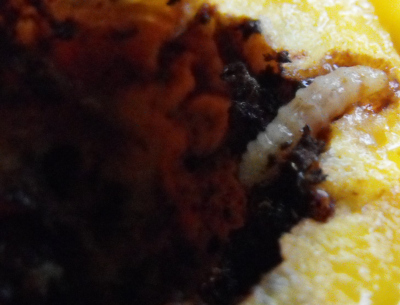 Our peach tree had another surprise
in store for me. I chomped down on one of its luscious
fruits...and spit that bite right back out, along with the maggot
happily consuming the peach's center. Yes, nearly every one of
our peaches has a little blob of gum on the outside marking the
entrance path of these little, white larvae.
Our peach tree had another surprise
in store for me. I chomped down on one of its luscious
fruits...and spit that bite right back out, along with the maggot
happily consuming the peach's center. Yes, nearly every one of
our peaches has a little blob of gum on the outside marking the
entrance path of these little, white larvae.
The first step in
combatting any insect infestation is figuring out
what you've got, but I had quite a time identifying my maggot. My
handy Garden Insects of North
America narrowed
down the 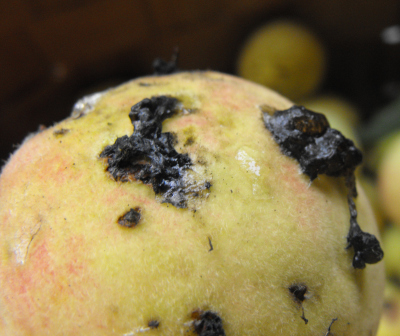 playing
field
to a mere score of "fruit chewers": plum curculio, plum gouger, cherry
curculio, speckled green fruit worm, peach twig borer, eyespotted bud
moth, oriental fruit moth, navel orangeworm, lesser appleworm, cherry
fruit-worm, mineola moth, cherry fruit sawfly, apple maggot, walnut
husk fly, cherry fruit fly, western cherry fruit fly, black cherry
fruit fly, chokecherry gall midge, European earwig, or green fruit
beetles.
playing
field
to a mere score of "fruit chewers": plum curculio, plum gouger, cherry
curculio, speckled green fruit worm, peach twig borer, eyespotted bud
moth, oriental fruit moth, navel orangeworm, lesser appleworm, cherry
fruit-worm, mineola moth, cherry fruit sawfly, apple maggot, walnut
husk fly, cherry fruit fly, western cherry fruit fly, black cherry
fruit fly, chokecherry gall midge, European earwig, or green fruit
beetles.
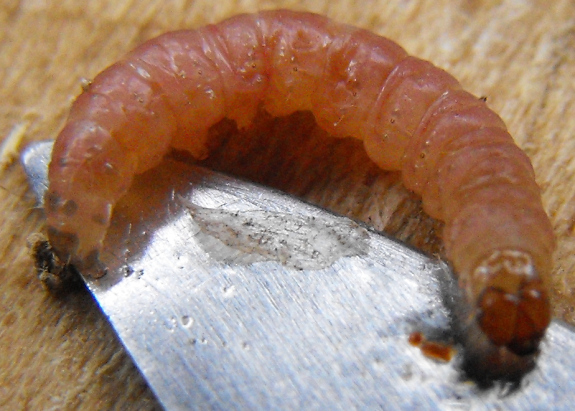
An expert at Bug Guide took a look and gave me a
tentative ID of
coddling moth or oriental fruit moth, the latter of which is more
likely as a pest of peaches. Although most of the mainstream
websites tell me to spray chemicals on my tree, an Australian
site
recommends running chickens in the orchard. I wonder if putting
up a temporary fence around our peach trees and running chickens inside
during critical periods in the spring and fall would be sufficient to
cut down on our peach damage?
That Australian site
(which I am thoroughly impressed by) also suggested some other
permaculture style control measures for the oriental fruit moth. My
favorite involves taking advantage of the fact that the moth goes
through several generations in a year. Before the fruit are
large, the larvae instead grow inside twigs, which are highly visible
because they wilt and produce gum. By cutting off and destroying
these infested twigs in the spring, you 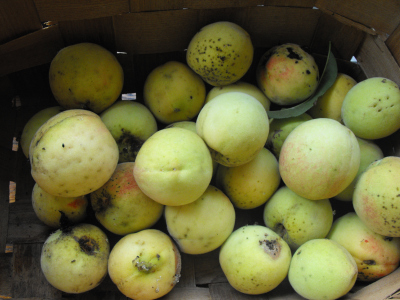 can
cut back the population, which means there won't be adults present to
lay eggs on your precious peaches.
can
cut back the population, which means there won't be adults present to
lay eggs on your precious peaches.
A final method of
control involves putting out artificial pheremones around the
tree. These pheremones mimic the scent emitted by the female moth
when she's trying to attract a mate, so they disrupt the moths' mating
behavior. At four pheremone ties per tree, replaced twice a year,
though, this method could add up.
Despite the problematic
centers, our white peaches are growing on
me. I cut them in half and scoop out the bad spots, then gulp
down half a dozen a day. Now that they're at their peak of
ripeness, I've discovered I prefer homegrown white peaches to
storebought yellow peaches!
Want more in-depth information? Browse through our books.
Or explore more posts by date or by subject.
About us: Anna Hess and Mark Hamilton spent over a decade living self-sufficiently in the mountains of Virginia before moving north to start over from scratch in the foothills of Ohio. They've experimented with permaculture, no-till gardening, trailersteading, home-based microbusinesses and much more, writing about their adventures in both blogs and books.
Want to be notified when new comments are posted on this page? Click on the RSS button after you add a comment to subscribe to the comment feed, or simply check the box beside "email replies to me" while writing your comment.
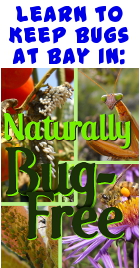

You give my four-years-ago self way too much credit. When I planted the first round of fruit trees, I thought I could just plant what I liked to eat, wait a few years, and then eat them. I feel like I'm still very much at the beginning of my fruit journey, figuring out which varieties of apples can survive our cedar apple rust, which types of grapes aren't so susceptible to Japanese beetles, and so forth.
When I planted the first round of fruit trees, I thought I could just plant what I liked to eat, wait a few years, and then eat them. I feel like I'm still very much at the beginning of my fruit journey, figuring out which varieties of apples can survive our cedar apple rust, which types of grapes aren't so susceptible to Japanese beetles, and so forth.
On the other hand, even if I'd known peaches were hard, I probably would have tried them. I adore peaches. And our harvest is turning out to be awesome, all things considered!
One advantage to being old. I worked in peach orchards in my youth and remember (in the 1950s) when no exotic sprays were used. There was an abandoned apple orchard not far from where I grew up and I would carry gunny sacks full of apples down off the mountain where it sat. The fruit had "bad places" but were not at all difficult to use.
The plastic-looking fruit sold in grocery stores was not available in my youngest years. Through marketing, it became the standard replacing the older standard which included blemished, "imperfect" fruit.